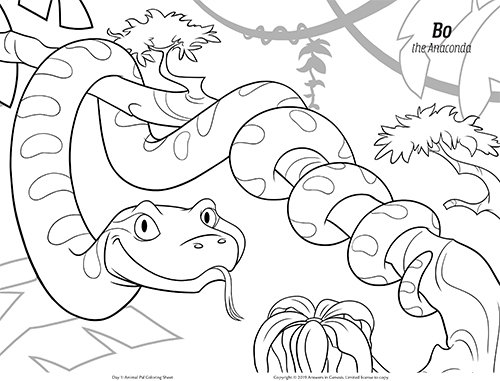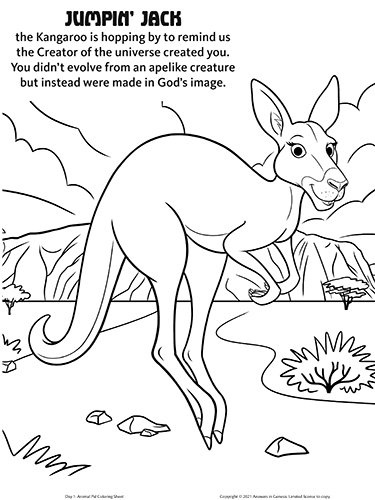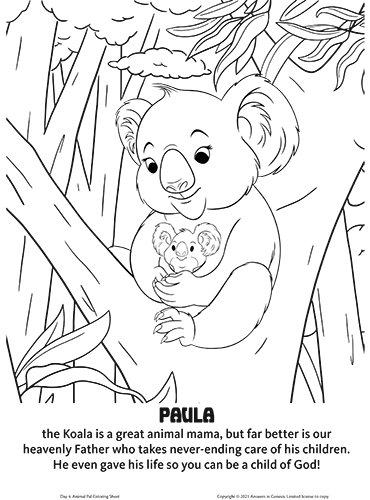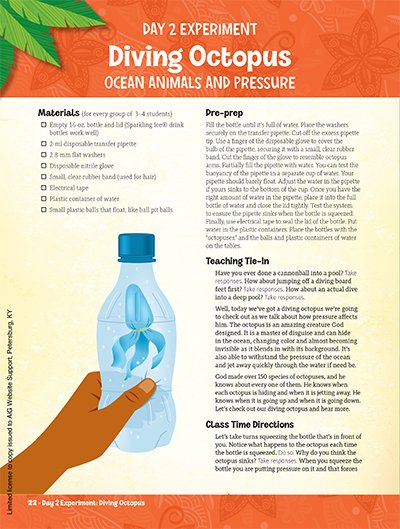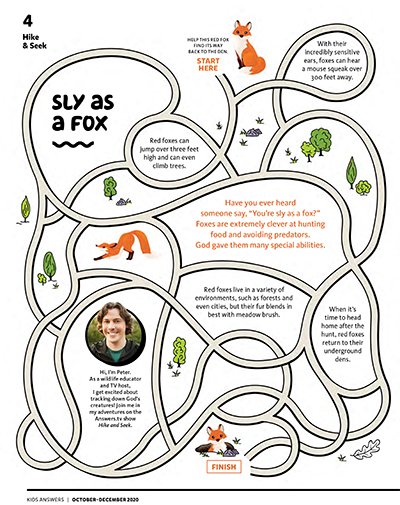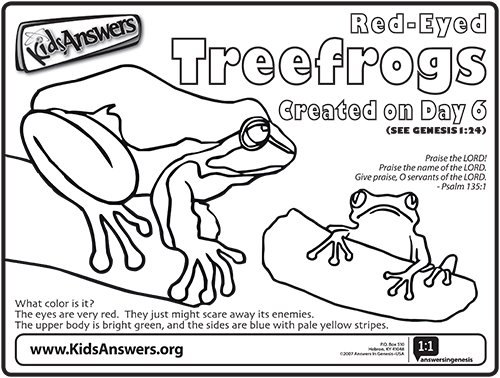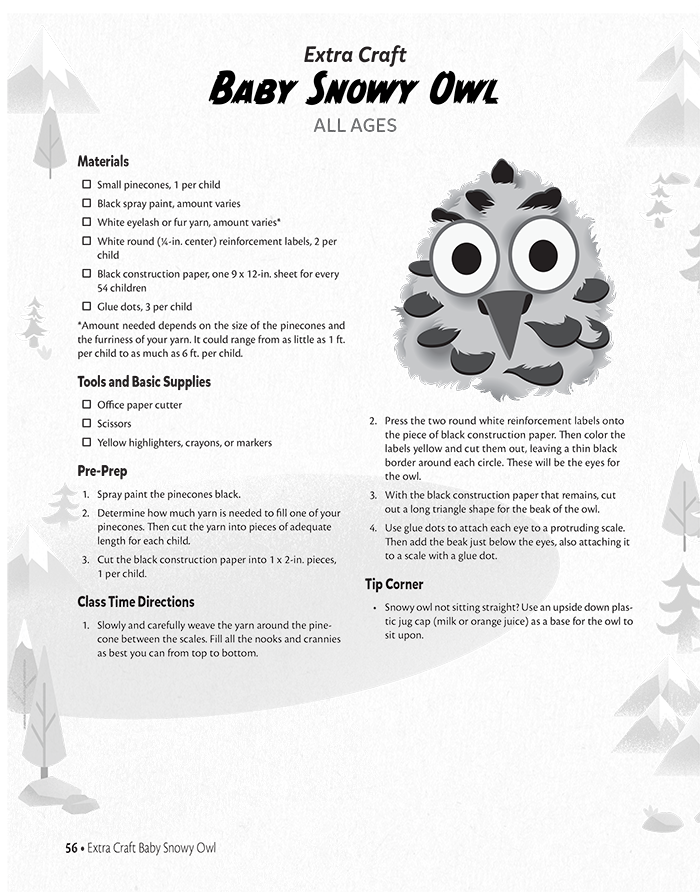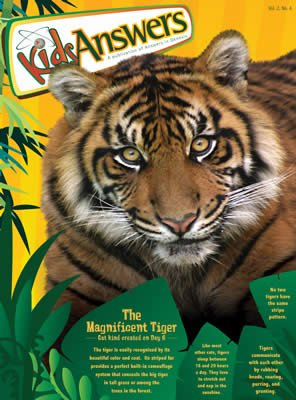What Are Animal Kinds?
May 18, 2022
God created animals according to their kinds. Two of every kind (seven pairs of some) of land-dwelling, air-breathing animal went on the ark. After the flood, many species formed from these original kinds because of the incredible genetic variability God built into each one.
Animals are considered the same kind if they can breed together. In most instances, “kind” is equivalent to “family” in our modern classification system.
What Animal Do You Want to Learn More About?
(First Letter Only)
A
Alligator
Alligator/Caiman Kind
A group of alligators is called a congregation. They belong to the family Alligatoridae, or alligator/caiman kind. Although they look similar, research currently places crocodiles and gharials in their own kinds.

American Alligator
Steve Hillebrand, U.S. Fish and Wildlife Service, Public domain, via Wikimedia Commons

Allosaurus
Allosaur Kind
Allosaurus was one of the earliest discovered dinosaurs. It grew up to 40 feet long and 16 feet tall. It belonged to the family Allosauridae, the allosaur kind.
Anaconda
True Boa Kind
Anacondas are the largest and heaviest living snakes. They are semi-aquatic with eyes and nostrils on the top of their heads. They belong to the subfamily Boinae, the true boa kind.

Ankylosaurus
Ankylosaurus
Ankylosaur Kind
Ankylosaurs were heavily armored dinosaurs, well-known for the large club-like protrusion on the end of their tail. They belong to the family Ankylosauridae, the ankylosaur kind.
Asian Elephant
Elephant Kind
African and Asian elephants are the only surviving members of the elephant kind, currently estimated as the family Elephantidae. Extinct members of this kind include mammoths, straight-tusked elephants, and Primelephas.
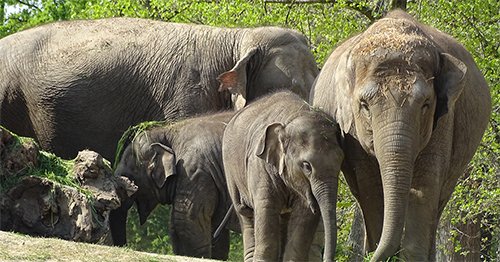
Asian Elephants
Ad Meskens via Wikimedia Commons
B
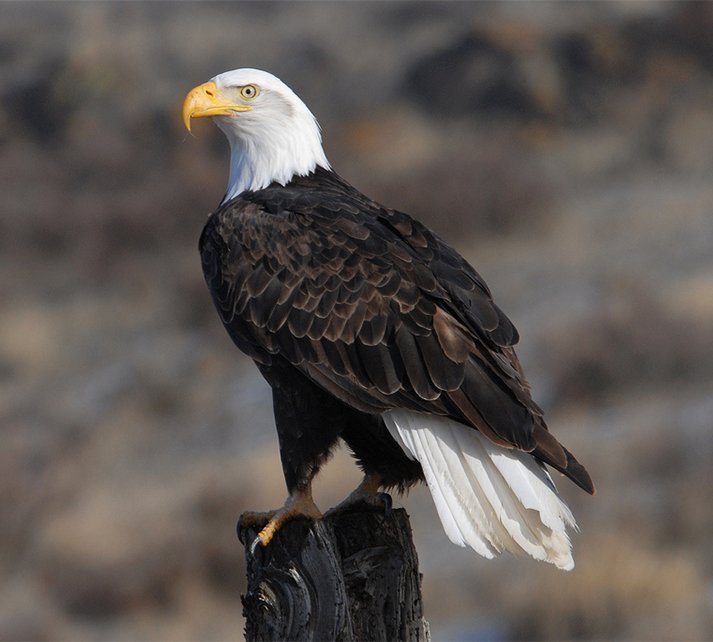
Bald Eagle
FWS, Public domain, via Wikimedia Commons
Bald Eagle
Hawk Kind
Bald eagles have been an American symbol since 1782. They belong to the massive family Accipitridae, or the hawk kind, along with other eagles, kites, harriers, and Old World vultures.
Bat
Various Bat Kinds
Bats are the only mammal capable of powered flight, and many species use echolocation for navigation. It is estimated there are up to 18 living bat kinds, all defined at the family level.
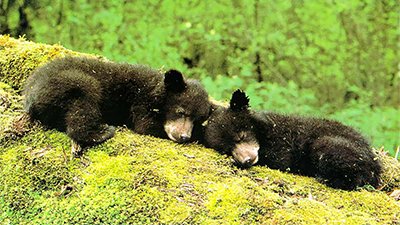
Black Bears
U.S. Fish and Wildlife Service Headquarters, Public domain, via Wikimedia Commons
Black Bear
Bear Kind

American Black Bear
Diginatur, CC BY-SA 3.0 https://creativecommons.org/licenses/by-sa/3.0, via Wikimedia Commons
American black bears are good climbers and swimmers and can reach speeds of 30 mph for short distances. They belong to the family Ursidae, or bear kind, along with pandas, polar bears, and others.
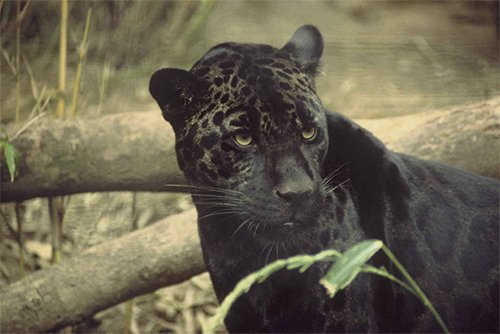
Black Jaguar
U.S. Fish and Wildlife Service, Public domain, via Wikimedia Commons
Black Panther
Cat Kind
Black panthers are color variants of big cat species. A “black panther” in the Americas is a jaguar, while one in Africa or Asia is a leopard. Jaguars and leopards belong to the family Felidae, or cat kind, along with lions, tigers, and others.
Black Rat Snake
King Snake Kind
Black rat snakes belong to the subfamily Colubrinae, the king snake kind. Containing over 700 species, the level of kind is tentative and may even fall below the subfamily level.
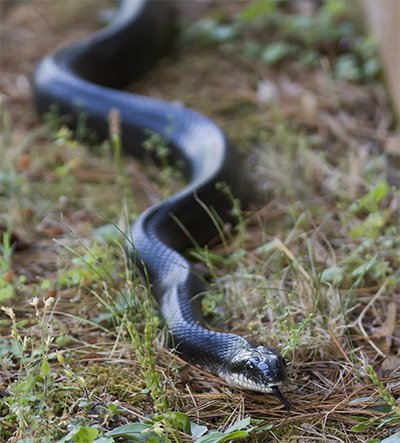
Black Rat Snake
Shenandoah National Park, Public domain, via Wikimedia Commons
Blue-Lipped Sea Krait
Sea Krait Kind
Blue-lipped sea kraits are designed to live in the water and on land. They are venomous and generally hunt eels. Sea kraits belong to the genus Laticauda, the sea krait kind.
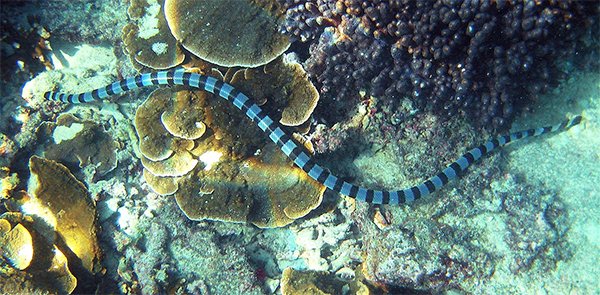
Blue-Lipped Sea Krait
jurvetson, CC BY 2.0 https://creativecommons.org/licenses/by-sa/2.0, via Wikimedia Commons

Blue Penguin
Tanya Dropbear, CC BY 2.0 https://creativecommons.org/licenses/by-sa/2.0, via Wikimedia Commons
Blue Penguin
Penguin Kind
Penguins are birds that are both flightless and aquatic. They belong to the family Spheniscidae, the penguin kind, which includes all living and extinct varieties.
Brachiosaurus
Brachiosaur Kind
Brachiosaurus was a sauropod dinosaur that may have grown over 70 feet (21 m) in length. It belongs to the family Brachiosauridae, or brachiosaur kind, but is now presumed extinct.
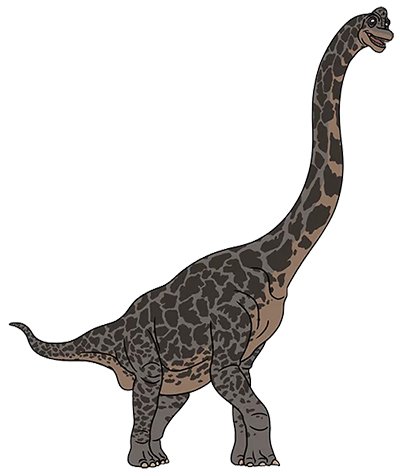
Bunny
Rabbit Kind
Rabbits, also known as bunnies, belong to the family Leporidae, or rabbit kind, along with hares, jackrabbits, and others. Many people mistakenly believe rabbits are rodents, but they are lagomorphs.

Jackrabbit
U.S. Fish and Wildlife Service, Public domain, via Wikimedia Commons
Burmese Python
Python Kind

Burmese Python
Everglades NPS from Homestead, Florida, United States, Public domain, via Wikimedia Commons
Burmese pythons are large snakes with infrared receptors that can sense very minute temperature differences, telling them if any prey is nearby. They belong to the family Pythonidae, the python kind.
Bushbaby
Bushbaby Kind
Bushbabies are named for the noise they make that sounds like a crying baby. These round-eyed primates belong to the family Galagidae, the bushbaby kind.

Bushbaby
OpenCage, CC BY-SA 2.5 https://creativecommons.org/licenses/by-sa/2.5, via Wikimedia Commons
C
Camel
Camel Kind
Dromedary camels have one hump while Bactrian camels have two. Camels belong to the family Camelidae, or camel kind, which also includes llamas, alpacas, guanacos, vicuñas, and extinct varieties.
CJ the dromedary camel loves the leaf blower!
Cat (Domestic)
Cat Kind
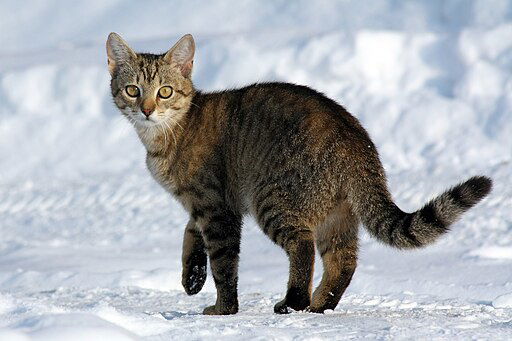
Domestic Cat
Von. grzanka, CC BY-SA 3.0 https://creativecommons.org/licenses/by-sa/3.0, via Wikimedia Commons
There are over 40 breeds of domesticated cats. This wide variety was built into the family Felidae, or cat kind, by God. This kind also includes tigers, cougars, lions, and more.
Chameleon
Chameleon Kind
Chameleons belong to the family Chamaeleonidae, the chameleon kind. They have prehensile tails, independently moving eyes, and can change color to match their surroundings.
Cheetah
Cat Kind
Cheetahs can reach top speeds of 75 mph. Unlike other cats, they lack retractable claws. They belong to the family Felidae, or cat kind, along with lions, tigers, domestic cats, and others.
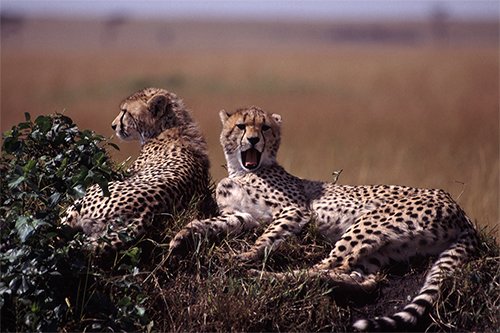
Cheetah
John Storr, Public domain, via Wikimedia Commons

Chimp
Bernard DUPONT from FRANCE, CC BY-SA 2.0 https://creativecommons.org/licenses/by-sa/2.0, via Wikimedia Commons
Chimp
Great Ape Kind
Chimpanzees are designed to swing through the trees but can also reach running speeds of 25 mph! Chimpanzees belong to the family Pongidae, or great ape kind, which includes gorillas, orangutans, and others, including extinct varieties.
Copperhead Snake
Copperhead/Moccasin Kind
Andy Reago & Chrissy McClarren, CC BY 2.0 https://creativecommons.org/licenses/by/2.0, via Wikimedia Commons
Copperhead snakes are venomous, having hemotoxic venom that attacks blood cells and causes tissue damage. The subfamily Crotalinae may approximate the level of kind for copperheads and similar pit vipers, apart from rattlesnakes who may belong to their own kind.
Coral Snake
Cobra Kind
Coral snakes have the second-strongest venom of any snake. Some nonvenomous snakes have similar coloration to trick predators. Coral snakes belong to the subfamily Elapidae, or the cobra kind, along with cobras and death adders.

Coral Snake
U.S. Fish and Wildlife Service, Public Domain via Wikimedia Commons
Crocodile
Crocodile Kind
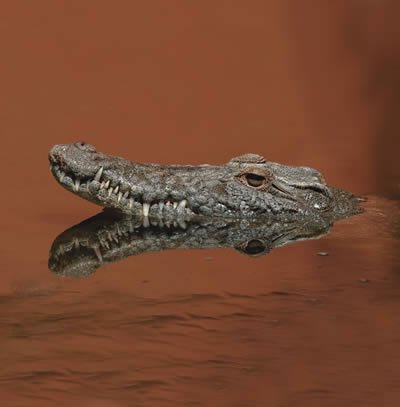
Crocodiles are the largest living reptiles, and while they have 24 sharp teeth, they do not chew their food. They belong to the family Crocodylidae, the crocodile kind. Although they look similar, research currently places alligators and gharials in their own kinds.
D
Diplodocus
Diplodocid Kind

Diplodocus was one of the longest dinosaurs, with a neck that stretched over 21 feet. One study found these animals may have whipped their tails to produce a cannon-like boom. They belonged to the family Diplodocidae, the diplodocid kind.
Dog
Dog Kind
All our dog breeds, and thirty-five species of dogs, including wolves, foxes, dingos, and coyotes, belong to the family Canidae, the dog kind.
Dragon
Various Kinds
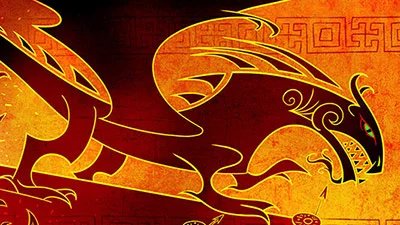
Dragons appear again and again in the records of cultures around the world, as well as in their art and pottery. These accounts and images of dragons portray them as creatures very similar to dinosaurs. According to the Bible, God created dinosaurs and other reptiles on days five and six (Genesis 1:20–25). They would have come off Noah’s ark after the flood. Over the years, people told stories about dinosaur-like animals and created artwork depicting them. These stories became distorted with time, and we are left with “dragon legends.” In the book of Job, God describes the Behemoth and the fire-breathing Leviathan (Job 40:15–24, 41:1–34).
E
Elephant
Elephant Kind
African and Asian elephants are the only surviving members of the elephant kind, currently estimated as the family Elephantidae. Extinct members of this kind include mammoths, straight-tusked elephants, and Primelephas.

Asian Elephants
Ad Meskens via Wikimedia Commons
Emperor Penguin
Penguin Kind
Penguins are birds that are both flightless and aquatic. They belong to the family Spheniscidae, the penguin kind, which includes living and extinct varieties.
Watch this excerpt about penguins from Incredible Creatures That Defy Evolution, volume 3.
F
Fennec Fox
Dog Kind
Fennec foxes have massive ears to help keep them cool in the desert. Fennec foxes are part of the family Canidae, or dog kind, along with wolves, domestic dogs, and others.
Five-Lined Skink
Typical Skink Kind
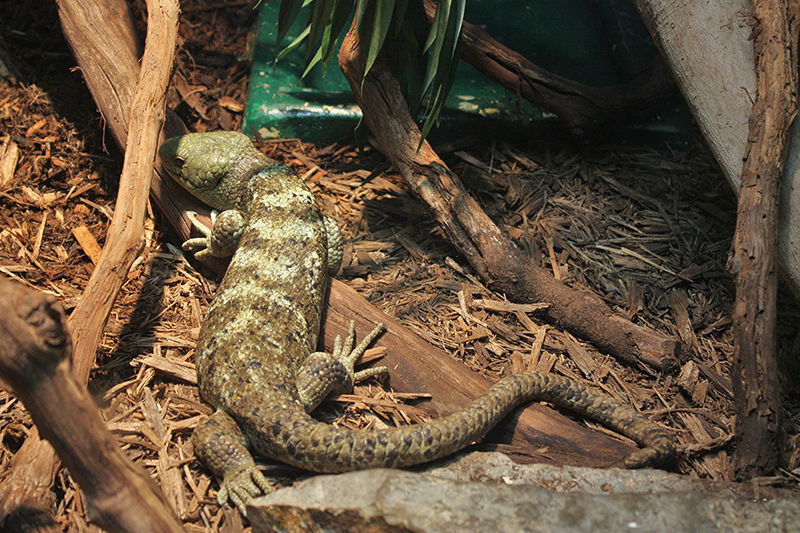
Corucia zebrata
Postdlf, CC BY-SA 3.0 https://creativecommons.org/licenses/by-sa/3.0, via Wikimedia Commons
This prehensile-tailed skink is also known as the monkey skink, since it has a tail that curls like a monkey's tail.
The five-lined skink is one of the most common lizard species in the eastern US. It belongs to the family Scincidae, the typical skink kind.
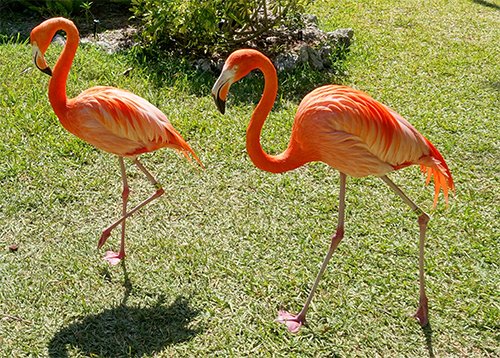
Flamingo
Daderot, Public Domain, via Wikimedia Commons
Flamingo
Flamingo Kind
Flamingos are famous for their pink plumage, which gets its color from the dye in the brine shrimp and blue-green algae they eat. They belong to the family Phoenicopteridae, the flamingo kind.
G
Giant Panda
Bear Kind
Pandas almost exclusively eat bamboo and even have a special thumb to help them. They belong to the family Ursidae, or bear kind, along with grizzlies, polar bears, and others.
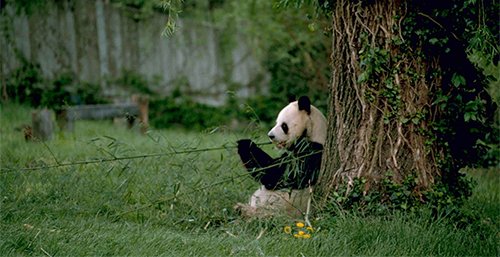
Giant Panda
Stolz Gary M, U.S. Fish and Wildlife Service, Public domain via Wikimedia Commons
Giraffe
Giraffe Kind
Necks aren’t the only thing about giraffes that are long. They also have long legs and tongues. Giraffes belong to the family Giraffidae, or giraffe kind, along with okapis.
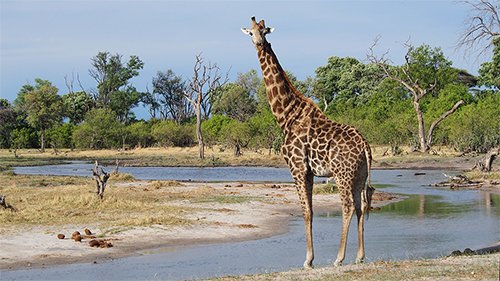
Giraffe
Rachel Hahs, Public Domain via Wikimedia Commons
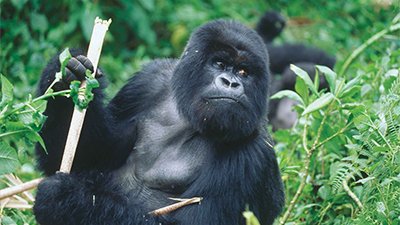
Giraffe
Ruggiero Richard, U.S. Fish and Wildlife Service, Public domain via Wikimedia Commons
Gorilla
Great Ape Kind
Gorillas are the world’s largest primates. They belong to the family Pongidae, or great ape kind, which includes orangutans, chimpanzees, and others, including extinct varieties.
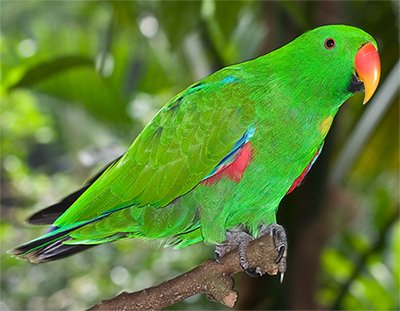
Green Parrot
Sheba_Also 43,000 photos, CC BY-SA 2.0 https://creativecommons.org/licenses/by-sa/2.0, via Wikimedia Commons
Green Parrot
Parrot Kind
Parrots are considered one of the most intelligent bird kinds, with some possessing the ability to mimic human voices. They belong to the order Psittaciformes, the parrot kind, along with cockatoos.
Grizzly Bear
Bear Kind

Grizzly bears are omnivores, eating both plants and animals. Despite their reputation as savage killers, grizzlies mostly eat berries, leaves, and nuts. They belong to the family Ursidae, the bear kind, along with pandas, polar bears, and others.
H
Hedgehog
Hedgehog Kind
Hedgehogs are spiny, insect-eating mammals found in Asia, Europe, Africa, and New Zealand. They belong to the subfamily Erinaceinae, the hedgehog kind.
Horse
Horse Kind
There are over 350 breeds of horses and ponies, and they all belong to the family Equidae, the horse kind. Donkeys, zebras, and many extinct varieties also belong to this kind.
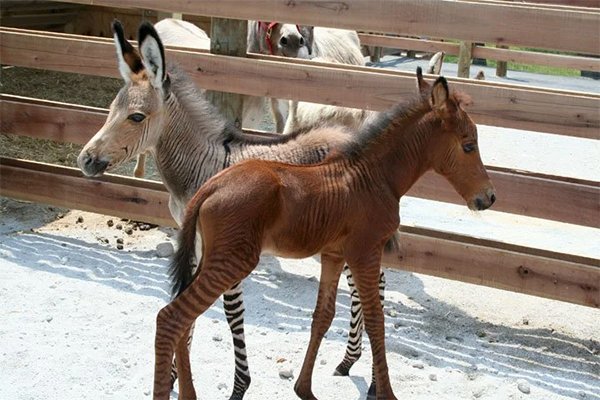
A zorse has a zebra father and a horse mother (front). A zonkey has a zebra father and a donkey mother (back). These animals are hybrids.
I
Iguana
Iguana Kind
Iguanas belong to a superfamily of lizards that have proven difficult to classify. But since members of the Iguanidae family have produced hybrids together, the iguana kind includes at least the lizards of this family.
J
Jackrabbit
Rabbit Kind

Jackrabbit
U.S. Fish and Wildlife Service, Public domain, via Wikimedia Commons
Jackrabbits are active at night and, unlike rabbits, give birth to babies covered in fur who are ready to run. They belong to the family Leporidae, or rabbit kind, along with other hares and rabbits.

Black Jaguar
U.S. Fish and Wildlife Service, Public domain, via Wikimedia Commons
Jaguar
Cat Kind
Jaguars are one of the few cat species that love water. A “black panther” in South America is actually a black jaguar. Jaguars belong to the family Felidae, or cat kind, along with lions, tigers, and others.
K
Kangaroo
Kangaroo Kind
Kangaroos are famous for their ability to jump and their baby pouches. They are marsupials and belong to the family Macropodidae, or kangaroo kind, which also includes wallabies, quokkas, tree-kangaroos, and others.
Koala
Koala Kind
Koalas are often called “koala bears,” but they are marsupials. Their favorite food, eucalyptus leaves, contains poisons, but their special digestive tracts allow them to safely eat it. They belong to the family Phascolarctidae, the koala kind.
L
Lamb
Tsoan Kind
Male sheep are called rams, females are ewes, and the cuddly babies are lambs. Sheep belong to the subfamily Caprinae, or tsoan kind, which also includes goats, muskoxen, and more.
Lion
Cat Kind
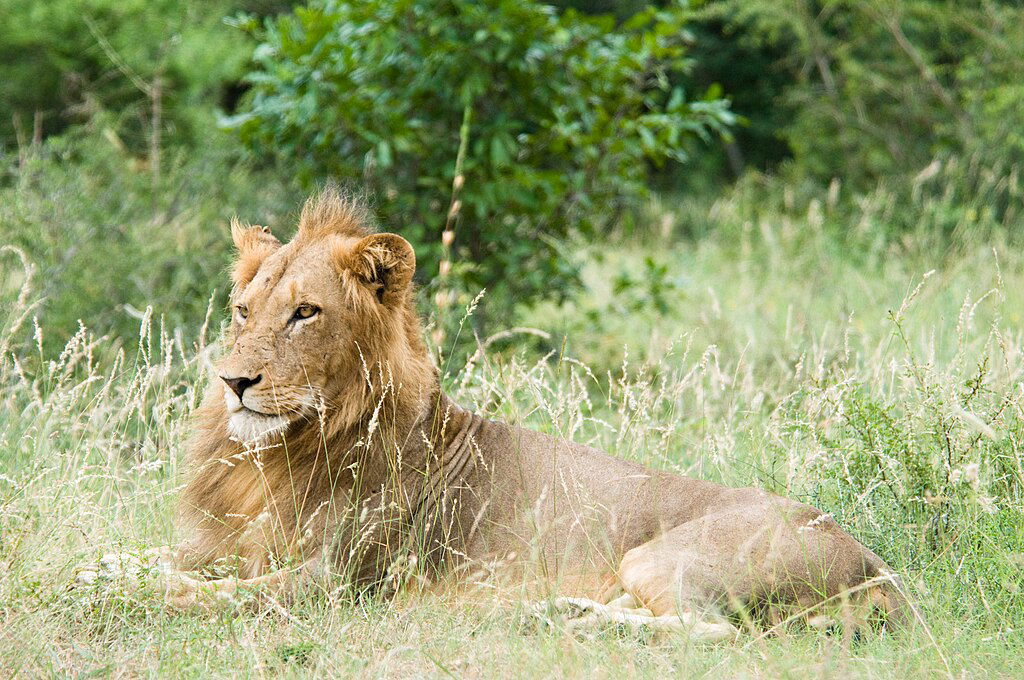
Chris Eason, CC BY 2.0, via Wikimedia Commons
Lions are the only truly social cats and live in groups called prides. They belong to the family Felidae, or cat kind, along with tigers, bobcats, cougars, domestic cats, and more (including extinct varieties).
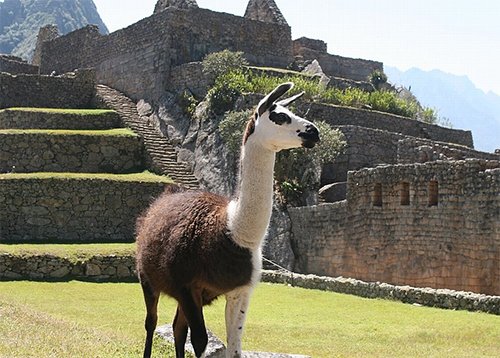
Llama
Sklmsta, CC0, via Wikimedia Commons
Llama
Camel Kind
Llamas are famous for spitting when they are angry (that “spit” is mostly their vomited stomach contents—gross!). They belong to the family Camelidae, or camel kind, which also includes camels, alpacas, guanacos, vicuñas, and many extinct forms.
Lobster
Various Lobster Kinds
Lobsters are invertebrates with a hard exoskeleton that they shed in order to grow (this is called molting). They grow their whole lives and can even regenerate limbs if they need to.
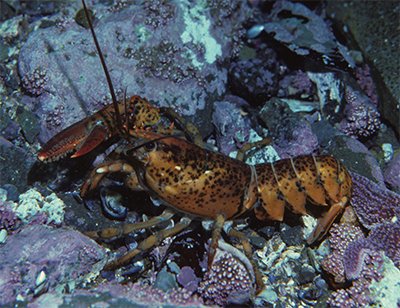
American Lobster
Derek Keats from Johannesburg, South Africa, CC BY 2.0 https://creativecommons.org/licenses/by/2.0, via Wikimedia Commons
M
Mastodon
Mastodon Kind
Mastodons were large animals of the family Mammutidae, now presumed extinct. Since they look very similar to elephants and mammoths of the family Elephantidae, it is unknown if the two families represented separate kinds or were together part of one big kind.

American Mastodon
Sergiodlarosa, CC BY-SA 3.0 http://creativecommons.org/licenses/by-sa/3.0/, via Wikimedia Commons
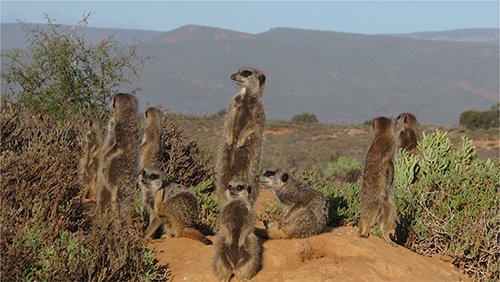
Meerkats
User: Mumpel2000, Public domain, via Wikimedia Commons
Meerkat
Mongoose Kind
Meerkats live in large family groups called “mobs” or “gangs.” Meerkats belong to the family Herpestidae, or the mongoose kind, along with mongooses and kusimanses. Meerkat fossils have been found in ice age rock layers of South Africa.
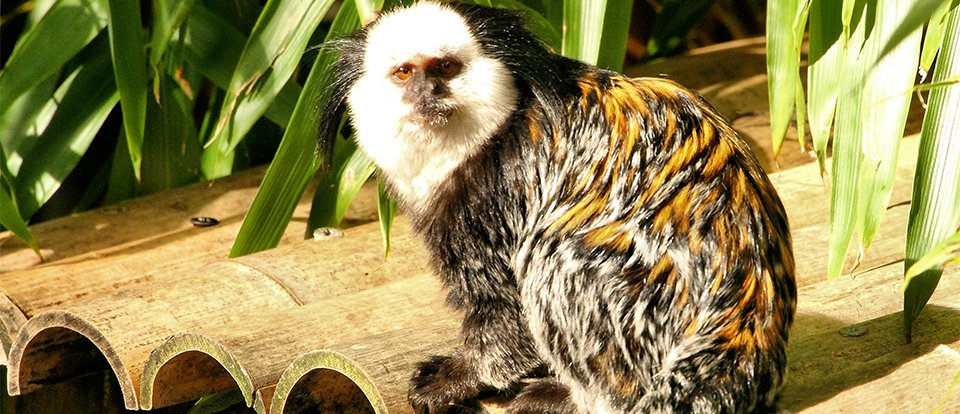
Marmoset
Airwolfhound, CC BY-SA 2.0 https://creativecommons.org/licenses/by-sa/2.0, via Wikimedia Commons
Monkey
Various Monkey Kinds
Monkeys are primates that typically have long tails and live in trees. It is estimated that there are around five living monkey kinds, all at the family level.
Mule Deer
Deer Kind
Mule deer are named for their big ears, which are similar to mule ears. They belong to the family Cervidae, or deer kind, along with white-tailed deer, elk, moose, reindeer, and more.
O
Octopus
Octopus Kind
The octopus is a soft-bodied mollusk with eight arms. It is smart, can use simple tools, and is ingenious at escaping. Octopuses have three hearts and blue blood. God created octopuses on day five of creation week.
Opossum
Opossum Kind
Opossums are marsupials that live in North and South America, and most have a long, scaly, nearly naked prehensile tail. They belong to the family Didelphidae, the opossum kind.
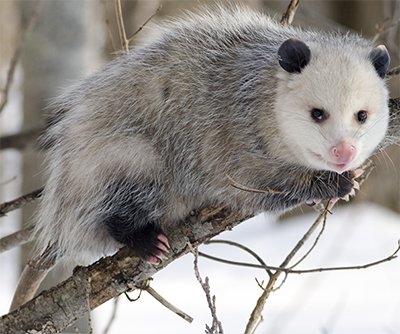
Opossum
Cody Pope, CC BY-SA 2.5 https://creativecommons.org/licenses/by-sa/2.5, via Wikimedia Commons
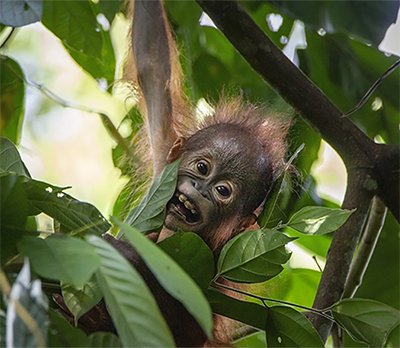
Orangutan
Edi sopiyan, CC BY-SA 4.0 https://creativecommons.org/licenses/by-sa/4.0, via Wikimedia Commons
Orangutan
Great Ape Kind
Orangutans are the only living great apes found in Asia and only live on two islands, Sumatra and Borneo. Orangutans belong to the family Pongidae, or great ape kind, which includes gorillas, chimpanzees, and others, including extinct varieties.
Orca
Oceanic Dolphin Kind
Orcas, also known as killer whales, are sea creatures. Their kind was not on the ark. Instead, they survived in the floodwaters. They belong to the family Delphinidae, the oceanic dolphin kind.
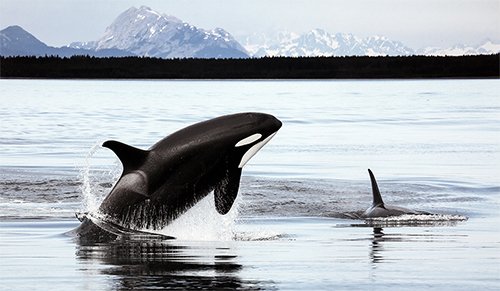
Orca
Christopher Michel, CC BY 2.0 https://creativecommons.org/licenses/by/2.0, via Wikimedia Commons
Ostrich
Ostrich Kind
Ostriches are the world’s largest living bird and can run for short distances at 43 mph. They belong to the family Struthionidae, the ostrich kind.
P
Panda
Bear Kind
Pandas almost exclusively eat bamboo and even have a special thumb to help them. They belong to the family Ursidae, or bear kind, along with grizzlies, polar bears, and others.

Giant Panda
Stolz Gary M, U.S. Fish and Wildlife Service, Public domain via Wikimedia Commons
Pika
Pika Kind
Pikas are about the size of a large hamster and live in rocky areas in the mountains. All 30 species of these adorable little mammals belong to the family Ochotonidae, the pika kind.
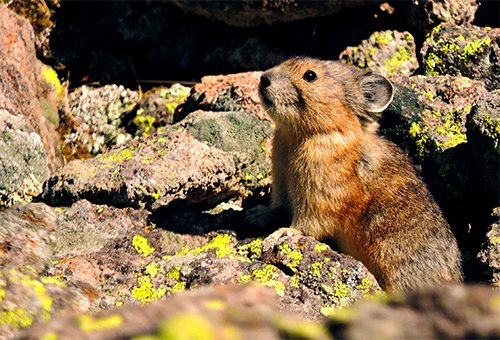
Pika
Great Sand Dunes National Park and Preserve, Public domain, via Wikimedia Commons
Polar Bear
Bear Kind
Polar bears are the only bear species considered marine mammals. They are excellent swimmers, and a thick layer of body fat keeps them warm. They belong to the family Ursidae, or bear kind, along with pandas, grizzly bears, and others.
Porcupine
Porcupine Kind
Due to differences in the structure of their quills and several other features, it is estimated that there are two living porcupine kinds: the family Hystricidae, or the Old World porcupine kind, and the family Erethizontidae, the New World porcupine kind.
Watch a video of Thomas the Porcupine at the Ark Encounter!
Pteranadon
Pteranodon Kind
Pteranodon was a flying reptile with a wingspan of up to 20 feet and a toothless beak. It belonged to the family Pteranodontidae, the pteranodon kind.
R
Raccoon
Raccoon/Coati Kind
Raccoons may travel up to 18 miles to forage for food, which includes almost anything. They belong to the family Procyonidae, or the raccoon/coati kind, along with kinkajous, olingos, and more.
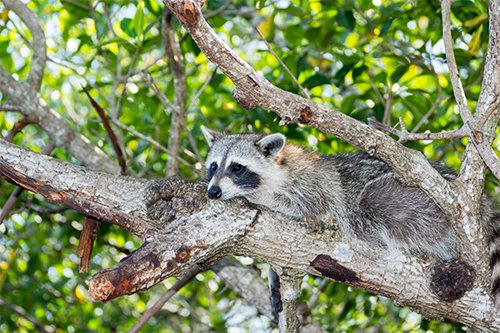
Raccoon
Bramans, CC BY-SA 4.0 https://creativecommons.org/licenses/by-sa/4.0, via Wikimedia Commons
Red Fox
Dog Kind
Red foxes are the most common, widespread species of fox in the world. Foxes are part of the family Canidae, or dog kind, along with wolves, domestic dogs, and others.
Red Panda
Red Panda Kind
Red pandas have proven difficult to classify. Currently, they belong to the family Ailuridae, the red panda kind, but they may belong in the raccoon/coati kind or even in the bear kind.
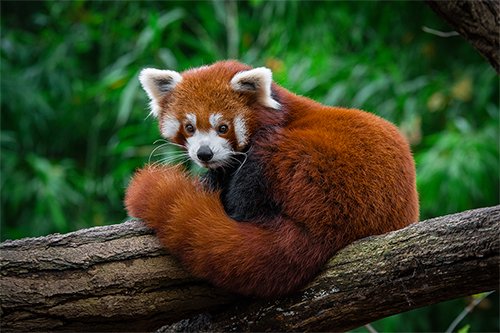
Red Panda
Mathias Appel, CC0, via Wikimedia Commons
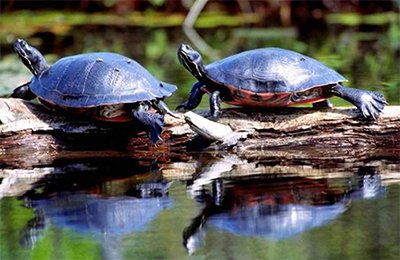
Red-Bellied Turtle
Byrne Bill, U.S. Fish and Wildlife Service, Public domain, via Wikimedia Commons
Red-Bellied Turtle
Pond Turtle Kind
Red-bellied turtles belong to the family Emydidae, or pond turtle kind, along with around 50 or so other species, including the chicken turtle and the painted turtle.
Red-Eyed Tree Frog
Arboreal Leaf Frog Kind
Red-eyed tree frogs belong to the subfamily Phyllomedusinae, the arboreal leaf frog kind. For now, this kind is estimated at the level of subfamily, not family like most other kinds.
Ring-Tailed Lemur
Lemur Kind
Ring-tailed lemurs, and all other lemurs, are only found in the wild on the island of Madagascar. They belong to the family Lemuridae, the true lemur kind.
Watch the ring-tailed lemurs eating applesauce in the Ararat Ridge Zoo at the Ark Encounter.
S
Scorpion
Various Scorpion Kinds
There are over 2,000 species of scorpions, but only thirty to forty species have poison capable of killing a human. Like insects, the scorpion kinds likely survived the flood on floating logs and mats of vegetation.
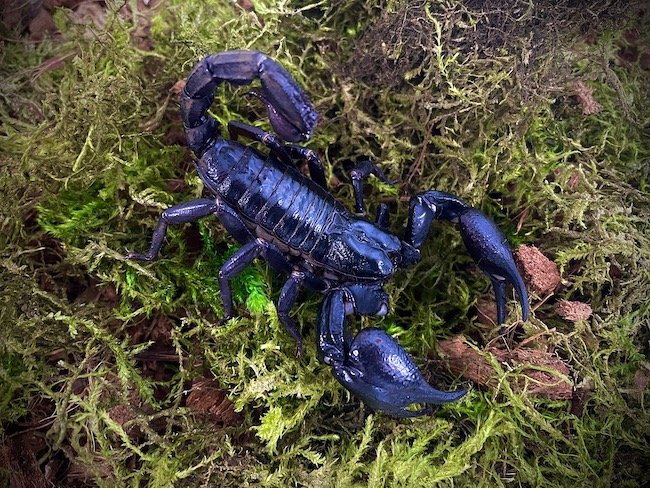
Jael the Asian forest scorpion lives at the Ark Encounter's Ararat Ridge Zoo.
Sea Turtle
Marine Turtle Kind
Green sea turtles only come on land to lay their eggs. They belong to the family Cheloniidae, or marine turtle kind, which includes six living species of sea turtles (the leatherback sea turtle may belong to a separate kind).
Skunk
Skunk Kind
Skunks are best known for their stinky spray. Pee-yew! Once considered members of the family Mustelidae, with its weasels, otters, and badgers, DNA evidence indicates skunks and stink badgers belong to their own family, Mephitidae, or skunk kind.

Striped Skunk
Dcrjsr, CC BY 4.0 https://creativecommons.org/licenses/by/4.0, via Wikimedia Commons
Sloth
Sloth Kind
Sloths today are arboreal (living in trees) and relatively small. But extinct ground sloths grew up to 20 feet in length! Sloths belong to the suborder Folivora, the sloth kind.
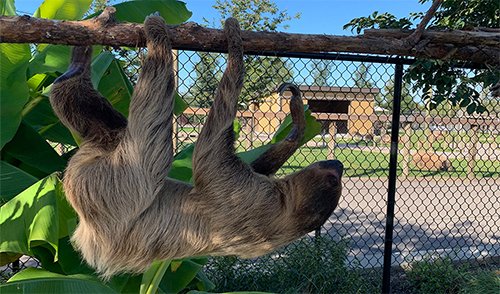
Two-Toed Sloth at the Ark Encounter's Ararat Ridge Zoo.
Snake
Various Snake Kinds
Snakes are a diverse group of reptiles. There are currently over 3,400 species, divided into over 40 kinds. Snakes can be terrestrial (land-dwelling), arboreal (tree-dwelling), marine, or semi-aquatic.
Snow Leopard
Cat Kind
A snow leopard’s wide, fur-covered feet act as natural snowshoes. Snow leopards belong to the family Felidae, or cat kind, along with lions, tigers, domestic cats, and others.

Image via Wikimedia Commons (public domain)
Snowy Owl
Barn Owl Kind
Snowy owls are native to Arctic regions. They belong to the family Strigidae, the owl kind. This kind includes all owls except the 18 species belonging to the family Tytonidae, or the barn owl kind.
Spinosaurus
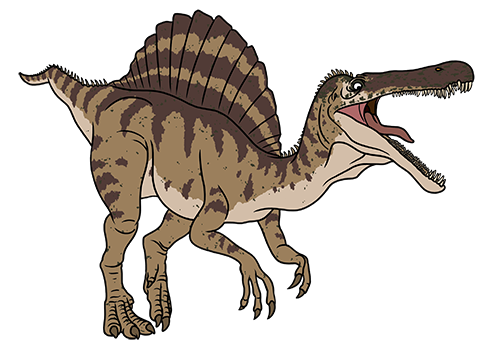
Artist Rendering of Spinosaurus
Spinosaur Kind
Spinosaurus was larger than T. rex at up to 49 feet in length and had spines that grew over five feet long. They belong to the family Spinosauridae, or the spinosaur kind.
Squirrel
Squirrel Kind
Squirrels are unintentionally helpful. Their forgotten buried nuts often grow into trees. Squirrels belong to the family Sciuridae, or squirrel kind, which also includes chipmunks, prairie dogs, and flying squirrels.
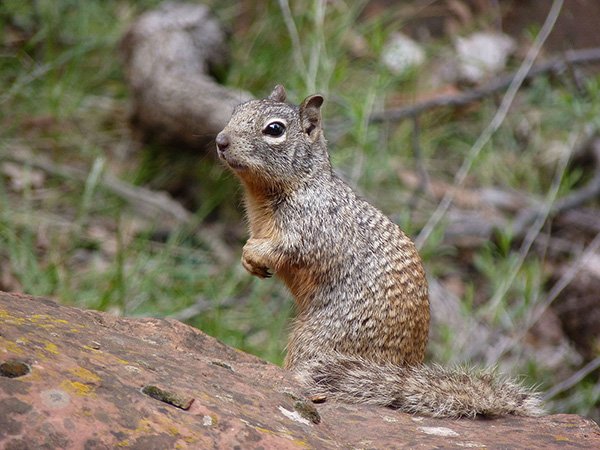
Image via Wikimedia Commons (public domain)
Squirrel Monkey
Marmoset/Tamarin/Capuchin/Squirrel Monkey Kind
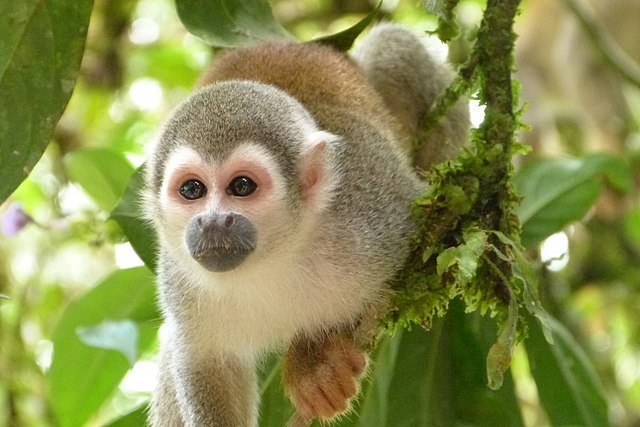
Squirrel monkeys rarely leave the treetops in the tropical forests they call home. They belong to the family Cebidae, which current research considers the marmoset/tamarin/capuchin/squirrel monkey kind.
Stegosaurus
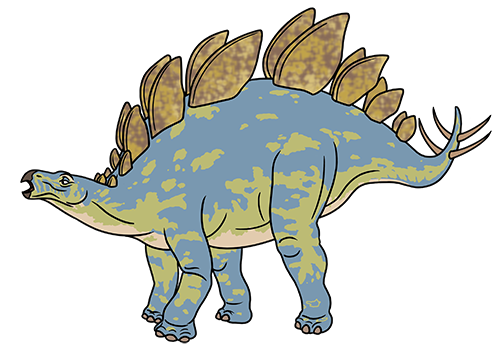
Artist Rendering of Stegosaurus
Stegosaur Kind
The backplates of Stegosaurus were covered in keratin, the same material as hair and fingernails. It belongs to the family Stegosauridae, or stegosaur kind, but is now presumed extinct.
Test your Dino Knowledge with our Dino Matching Games:
T
Tabby Cat

Cat Kind
There are over 40 breeds of domesticated cats. This wide variety was built into the family Felidae, or cat kind, by God. This kind also includes tigers, cougars, lions, and more.
Play our Cat Word Find Game!
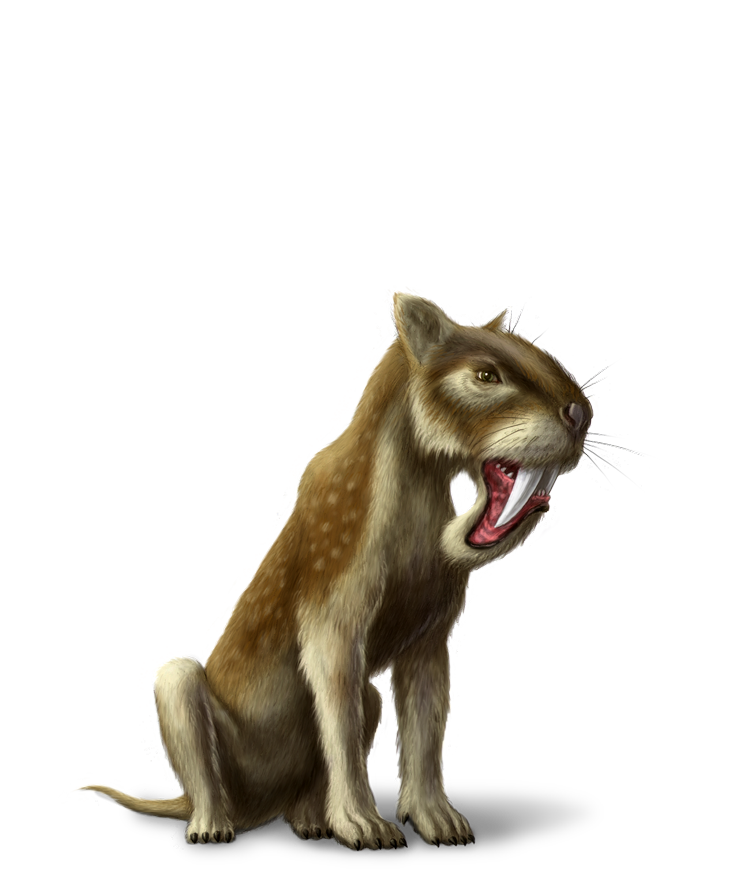
Illustration by Tim Hansen.
Thylacosmilus
Thylacosmilid Kind
Thylacosmilus had long canine teeth tucked into skin pouches and carried its young in a kangaroo-like pouch. It belonged to the family Thylacosmilidae, or the thylacosmilid kind.
Tiger
Cat Kind
Tigers are the largest living cat species. They are excellent swimmers and, in a fallen world, can even kill prey while swimming. They belong to the family Felidae, or cat kind, along with lions, jaguars, and others.
Timber Rattlesnake
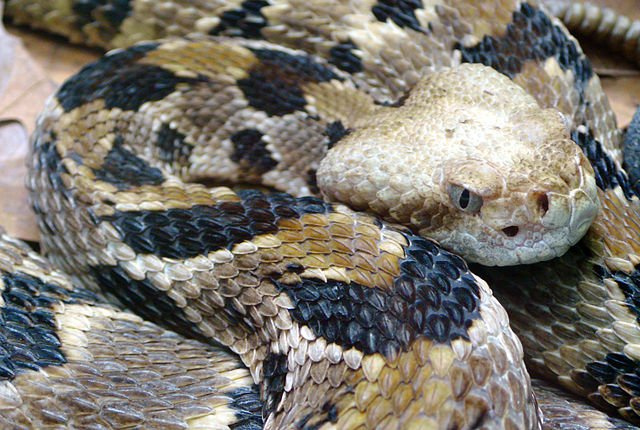
Rattlesnake Kind
Rattlesnakes are known for their rattle, which is made of interlocking segments of keratin that rattle when shaken. Rattlesnakes may belong to a separate kind from other pit vipers of the subfamily Crotalinae.
Toad
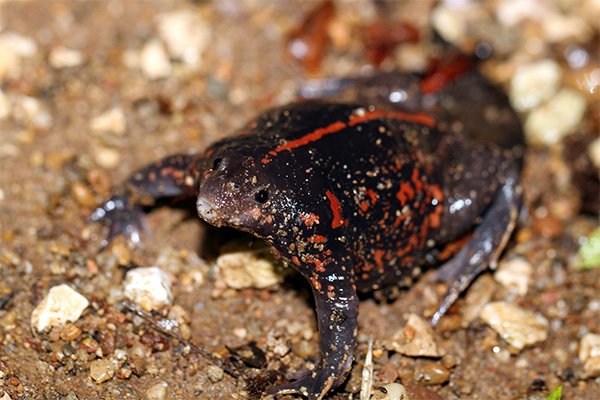
Burrowing Toad
Greg Schechter from San Francisco, USA, via Wikimedia Commons
Multiple Toad Kinds
Frogs have long legs and smooth, mucus-covered skin, while toads have short legs and rough, thick skin. There may be up to 140 living frog and toad kinds.
Want to test your knowledge? Try out this crossword puzzle!
Tortoise
Tortoise Kind
Tortoises are land-dwelling turtles with high-domed, hard shells. They can live to be over 150 years old! They belong to their own kind, the Testudinidae, or tortoise kind.
Triceratops

Ceratopsid Kind
Triceratops had three prominent horns, a parrot-like beak, and a frill on the back of its skull. It belongs to the family Ceratopsidae, or ceratopsid kind, but is now presumed extinct.
T. Rex
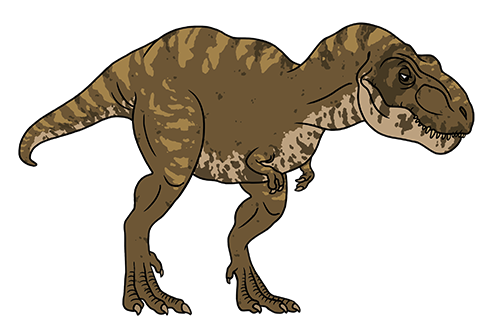
Tyrannosaur Kind
Tyrannosaurus rex, usually abbreviated to T. rex, could grow to be over 40 feet (12 m) long! It belongs to the family Tyrannosauridae, or tyrannosaur kind, but is now presumed extinct.
W
Wallaby
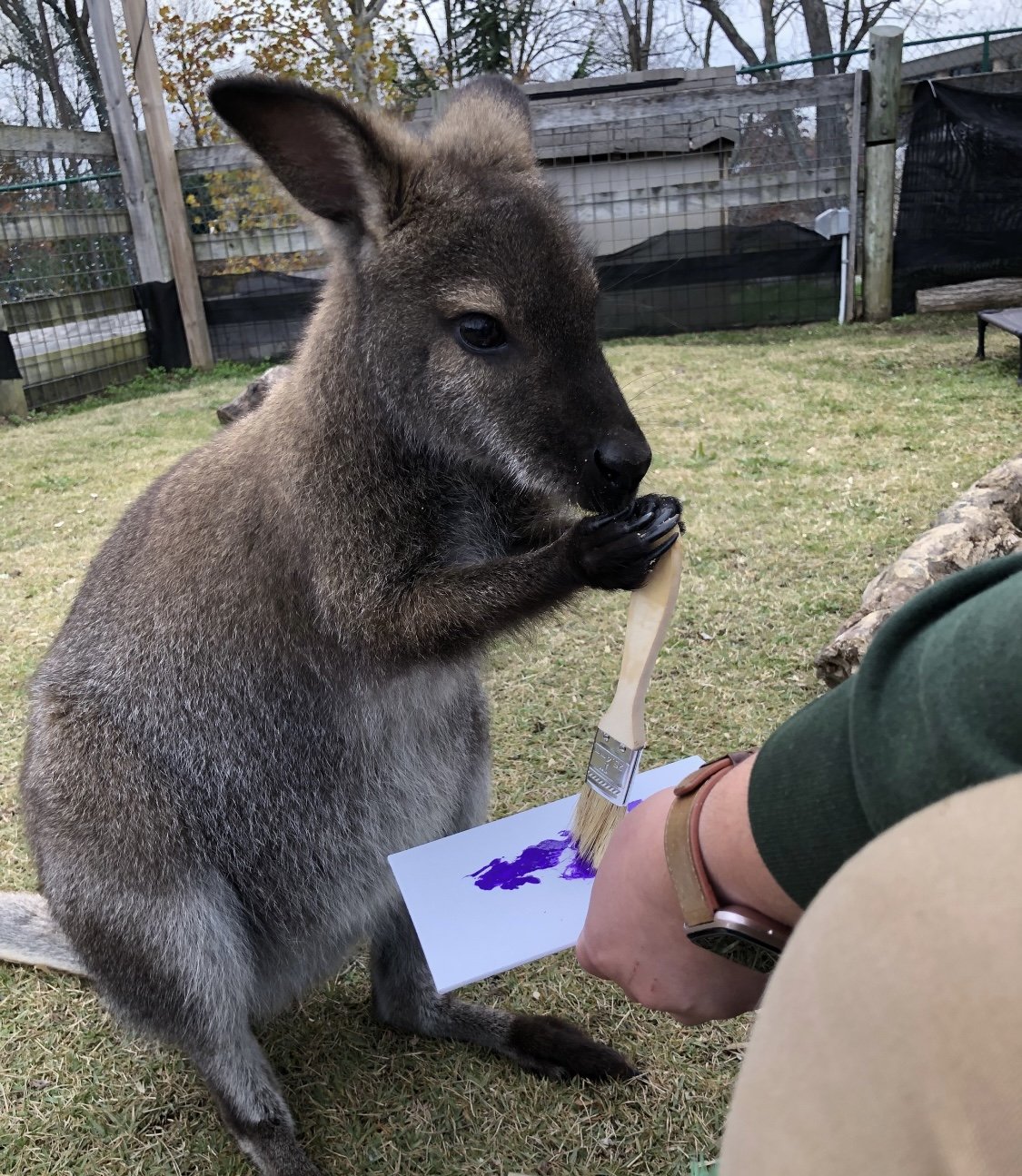
Boomer the Bennett's Wallaby
Kangaroo Kind
A wallaby baby, called a joey, is no bigger than a jelly bean when it is born and crawls into its mother’s pouch. They belong to the family Macropodidae, or kangaroo kind, which also includes kangaroos, quokkas, tree kangaroos, and others.
Warthog
Pig Kind
Warthogs live in dens dug and abandoned by aardvarks. When escaping a predator, they enter their dens rear first so they can use their tusks to defend themselves. Warthogs belong to the superfamily Suoidea, the pig kind.

Western Diamondback
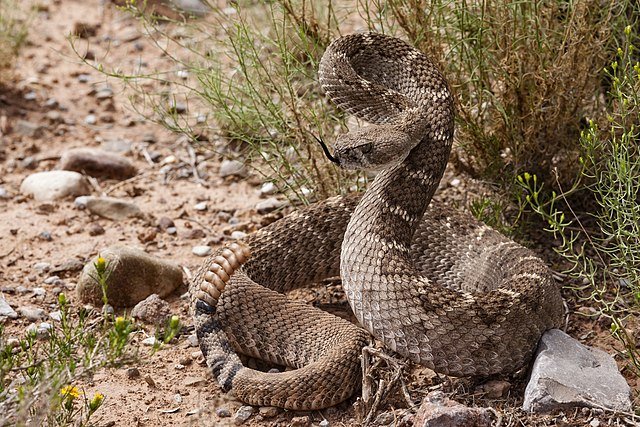
Rattlesnake Kind
Rattlesnakes are known for their rattle, which is made of interlocking segments of keratin that rattle when shaken. Rattlesnakes may belong to a separate kind from other pit vipers of the subfamily Crotalinae.
White Tiger

Cat Kind
White tigers are variants of black-and-orange tigers caused by a mutated gene. They are an anomaly in the wild and mostly exist only in zoos. They belong to the family Felidae, or cat kind, along with lions, jaguars, and others.
Wild Dog
Dog Kind
African wild dogs are efficient pack hunters, and their prey rarely escapes. They belong to the family Canidae, or dog kind, along with wolves, foxes, domesticated dogs, and others.
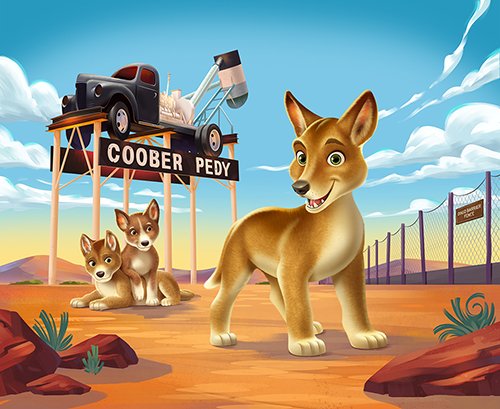
Wolf

Dog Kind
Wolves belong to the family Canidae, or dog kind, along with coyotes, foxes, jackals, domestic dogs (of which there are over 340 breeds), and more.
Woolly Mammoth
Elephant Kind
Mammoths are extinct members of the elephant kind, currently estimated as the family Elephantidae. Living members of this kind include African and Asian elephants, and extinct varieties include straight-tusked elephants and Primelephas.
Y
Yellow Labrador
Dog Kind
Labrador retrievers, or labs, are America’s most popular dog breed. Yellow labs are one of the color varieties, the other common colors being black and chocolate. They belong to the family Canidae, or dog kind, along with wolves, foxes, and others.
Z
Zebra

Horse Kind
There are over 350 breeds of horses and ponies, and they all belong to the family Equidae, the horse kind. Donkeys, zebras, and a lot of extinct varieties also belong to this kind.
